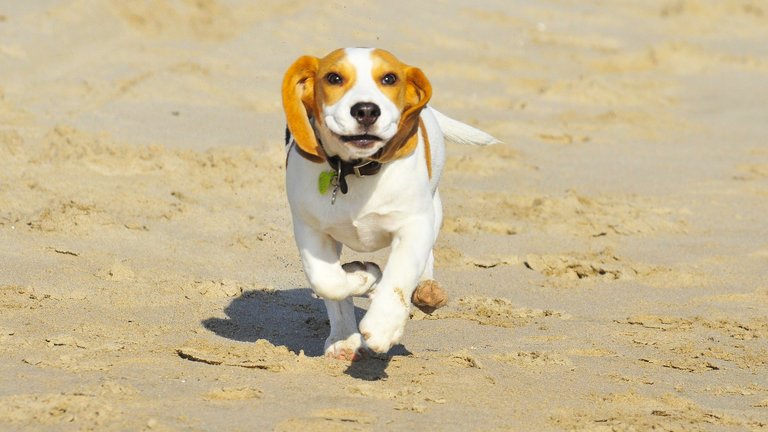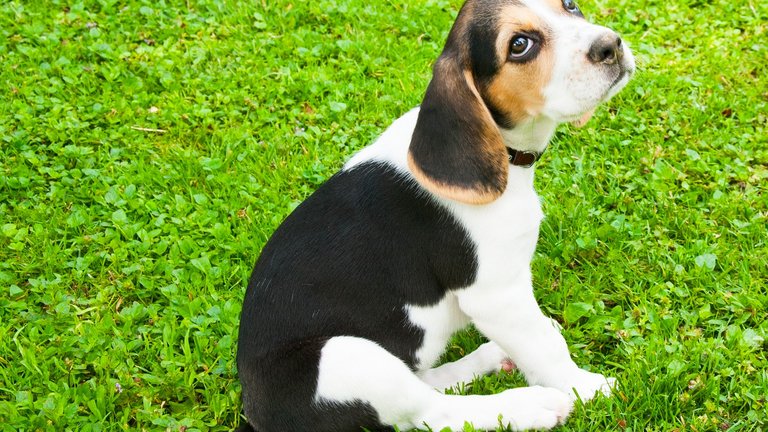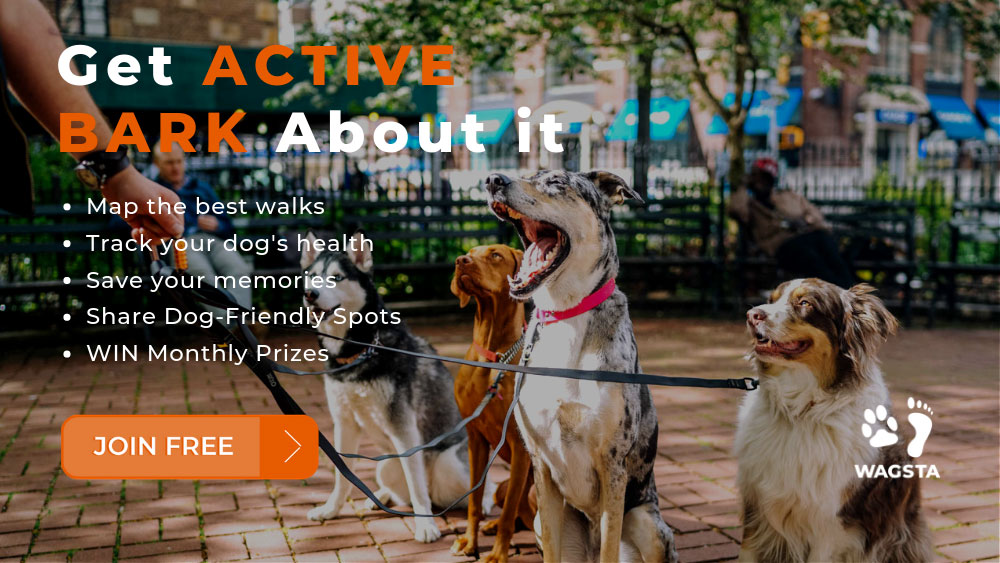The Beagle
Curious, easy-going and a devoted sniffer.
With his big brown eyes and long houndy ears, the Beagle is an easy dog to fall in love with. He is one of the top ten most popular dog breeds in the United States. The Beagle was originally bred as a scent hound to track rabbits and is still used for this purpose. They love exercise, and need it much more than most people think.
Beagles come in a lot of colors including lemon and white, orange and white, chocolate and white, red and white, and tri-color.
The Beagle has a compact build between 13 – 16 inches (33 – 41 cm) high and weighs 20 – 24 lbs (9 – 11 kg). His life expectancy is 10 – 15 years. You can maximize his lifespan with a healthy diet.

Famous Beagles
Beagles are big in the cartoon world. Who hasn’t heard of Snoopy! We also have Poochie (The Simpsons), Odie (Garfield), Gromit (Wallace and Gromit), Underdog, Mr. Peabody (Rocky and Bullwinkle), and Brains (Inspector Gadget).
Beagles star in movies, too. Frannie the dog plays a mistreated Beagle who runs away from her cruel owner in the movies Shiloh and Shiloh 2.
Beagles have appeared in television programs Star Trek, the East Enders, The Manor Born and The Wonder Years.
Positive Traits of the Beagle
- The Beagle is a conveniently-sized dog.
- Beagles are athletic and playful and enjoy outdoor activities.
- Beagles have a handsome body with soulful eyes.
- The Beagle is normally a good natured, peaceful family dog.
- Beagles get on well with other dogs.
- The Beagle’s short coat, though thick, is easy to groom. Beagles shed moderately throughout the year but more so during Spring. To rid them of excess fur, brush them 2 – 3 times per week.

Negative Traits of the Beagle
- The Beagle is not a good choice for your city apartment because an apartment will not provide him with enough space to run and play.
- A Beagle must stay on leash when not fenced in. Beagles have selective hearing. When they are on a scent they will not hear you calling them or obey any of your commands so keep him on leash.
- They have a tendency to bay and howl.
- Beagles require a lot of exercise, a minimum of thirty minutes in the morning and evening. If they don't exercise enough they can turn their energy to destructive pursuits.
- A Beagle will shed slightly more than the average pooch throughout the year, and more again in Spring when they lose their winter coat. To help rid him of excess fur, brush your Beagle two or three times per week.
- A Beagle will be happier with constant companionship so you might consider getting him a buddy.
- Beagles are cunning escape artists so his play area should be at least five feet tall and extend under the ground so he can’t tunnel beneath it.
- The Beagle has a potential for health issues (see below).

Exercise for the Beagle
Beagles are energetic dogs that need to play and exercise every day. Beagles were bred to work in a pack so they prefer to do this in company. Take him for a walk but keep him on leash. The Beagle is a scent hound and is unable to resist the urge to run in pursuit of a compelling scent. Yell all you like, he’ll be so focused on the scent he won’t hear you. A Beagle that is left on his own for too long might become destructive. Consider getting him a buddy.

Training the Beagle
Beagles can get distracted with smells and may be stubborn. But with patience and positive reinforcement, Beagles will respond to training. Treats are a useful training aid, but ensure you choose healthy low-calorie treats to avoid him becoming overweight.

Beagle Health Issues
The Beagle, as with all pure breed dogs, has proclivities to certain health issues. For the Beagle these include hip dysplasia, hypothyroidism, epilepsy, dislocated knee-caps and eye disorders. Responsible breeders will screen their breeding dogs for these conditions.
When buying Beagle puppies it is recommended to have a hip evaluation, ophthalmologist evaluation, and an MLS DNA test.
Beagles are also prone to obesity. Keep your beagle on a calorie-restricted diet and limit his access to treats. Beagles are experts when it comes to scavenging food. Curb this habit to prevent tummy upsets and weight gain.
As with all breeds, keep his nails trim, his ears clean and give his teeth a regular brush.
History of the Beagle
The first dogs referred to as ‘Beagles’ were tiny hound dogs used by hunters that stood no taller than 9 inches. They were called ‘pocket Beagles’ because hunters could literally put them in their pockets. The standard Beagle was bred in England in the 1840s and imported to the United States in 1870. The Beagle is the only dog to rate in the top ten for popularity since the American Kennel Club registry began.
It has been suggested that the name Beagle originated from the French word ‘beugler’, which means ‘to bellow’. Beagles sure know how to bellow but there is no evidence to support this theory.
Keep your Beagle active with your free WAGSTA walkies, weight and wellness tracker! Join the pack and start creating the optimal healthy lifestyle for your dog!
Create the optimal healthy lifestyle for your dog with WAGSTA!
